Hi I wrote this post in English and Slovak language.
As part of our trip through eastern Slovakia, we came close to the Slovak-Polish border. Near them there is a picturesque village with a very interesting cultural monument. I am glad that in today's post I can write about my trip to the wooden church in the village of Bodružal.
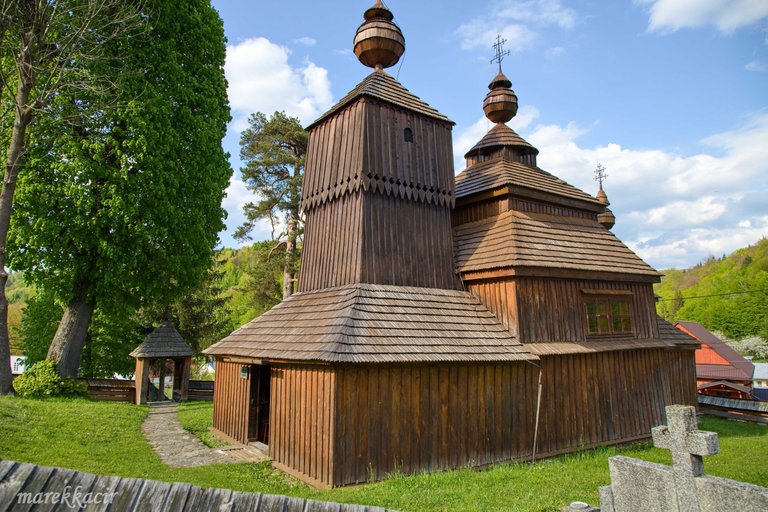
I will probably start with the most important. This beautiful wooden church of St. Nicholas has been on the UNESCO list since 2008. And no wonder. It already looks very interesting from the outside. It looks modest, and its wooden character fits perfectly into the color of the surrounding area.

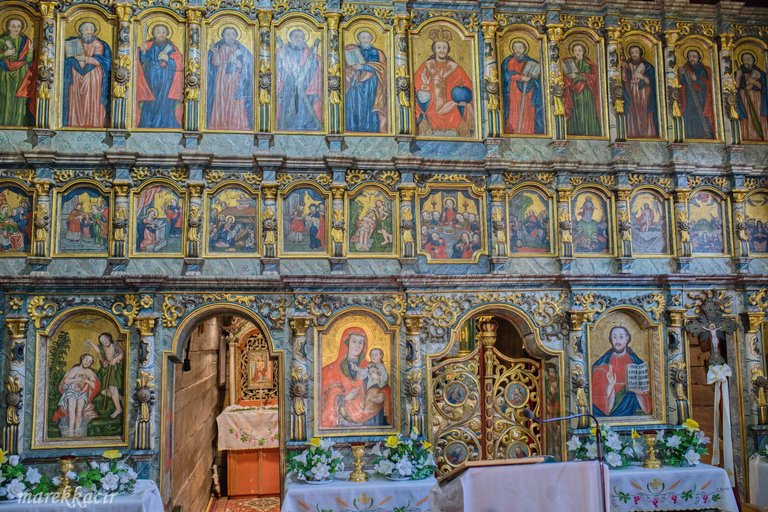
We enter and see in front of us the beauty that our ancestors built and decorated. The first thing you will notice is the iconostasis, which is directly opposite the entrance.
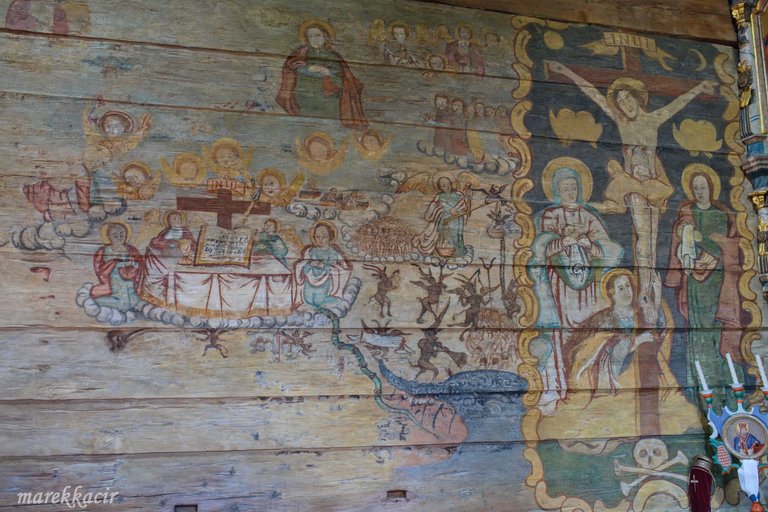
However, the most interesting for me are the paintings on the wall. As we learned, the sun is responsible for the fact that they are less pronounced in some parts. They come from the 1890s and depict various scenes from the Bible.
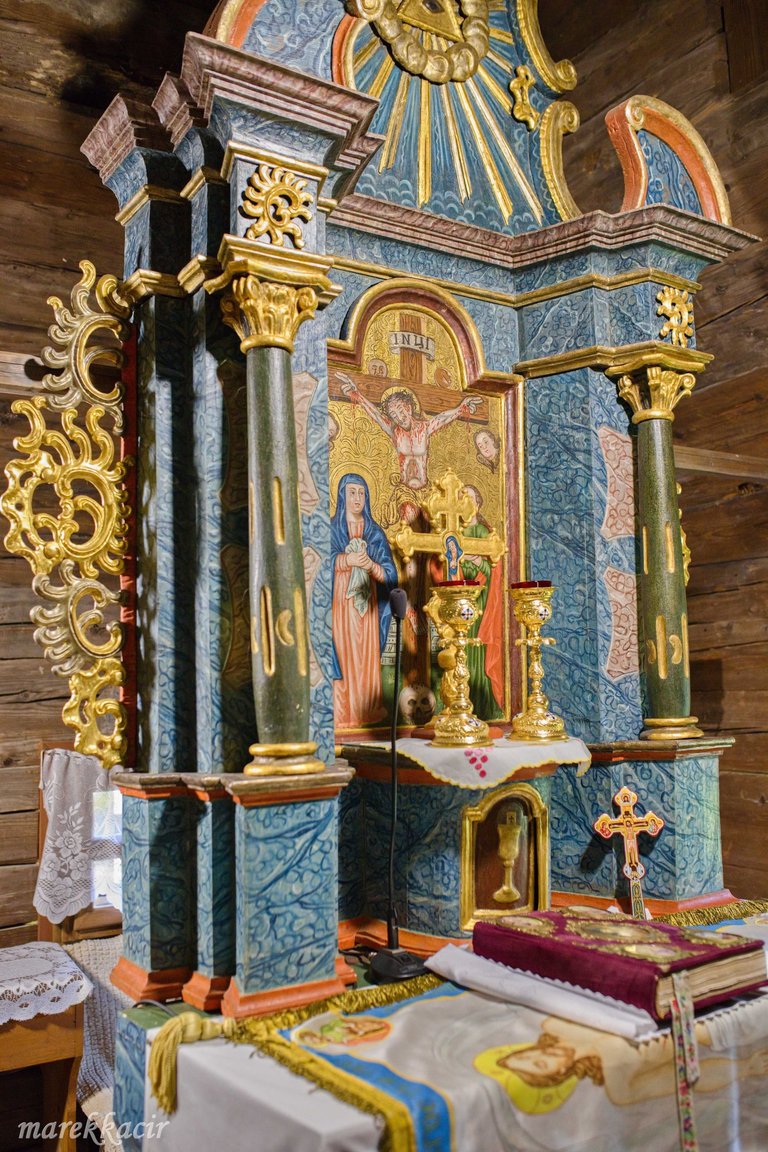
A very nice lady welcomed us in the church. Her name is Helenka, and together with her husband and parish priest, they take care of this historical monument. She asked us if she should play the recording in Slovak, or if we wanted an interpretation from her in the Russian language. Many Russians live in this area of Slovakia and preserve their culture and dialect. Of course we wanted her to tell us about the church and we did not regret it.
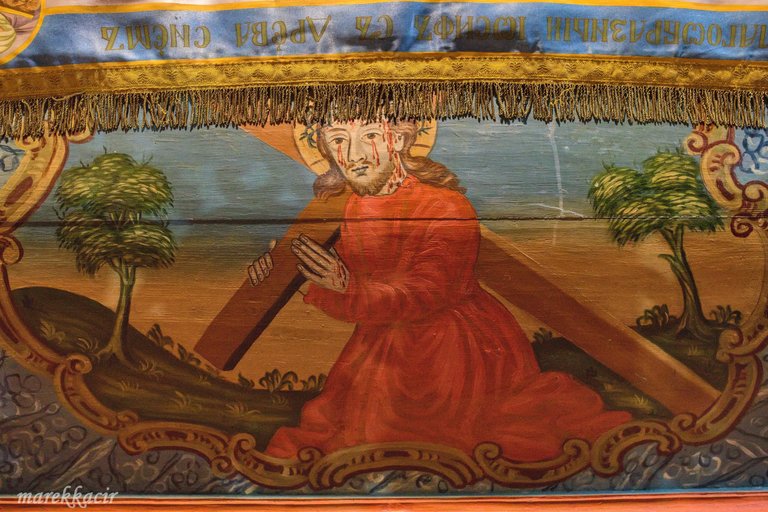
The temple dates from 1658 and is one of the oldest monuments of the Byzantine rite in Slovakia.
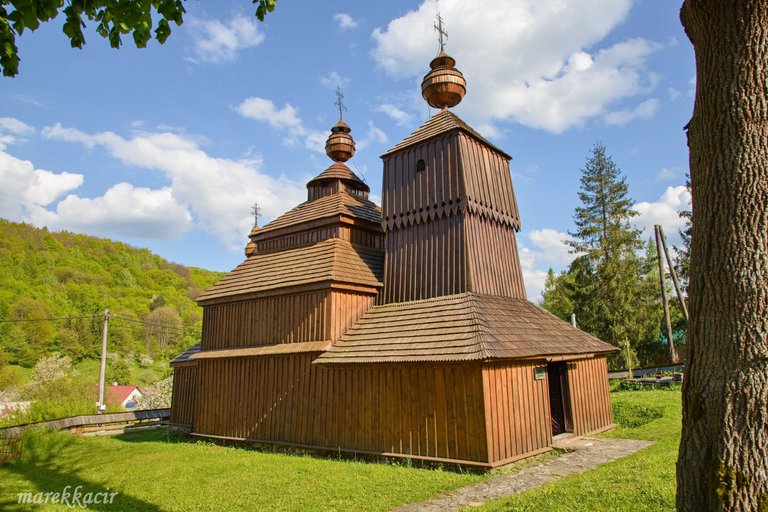
The temple is oriented from east to west. It has three towers. The smallest is in the east above the altar, the middle and the largest in the west. It is built entirely of wood, only the foundation is made of stone blocks.
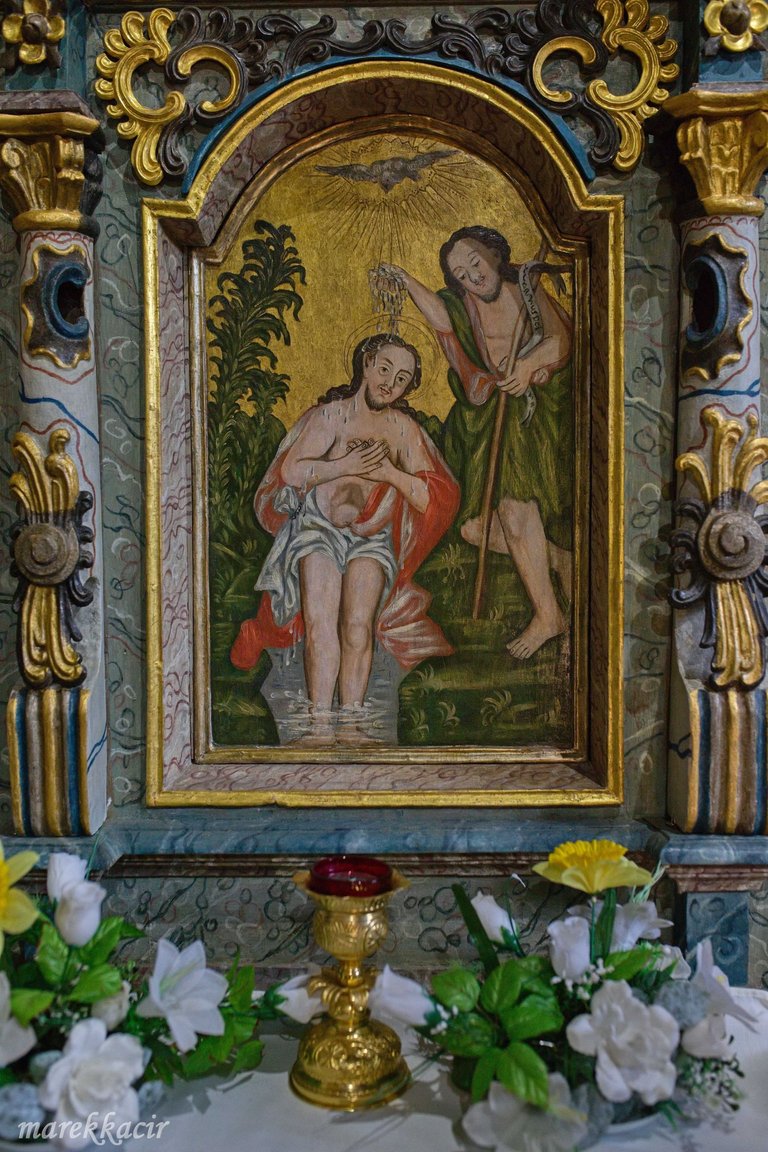
During the First World War, the temple lost two bells. They were replaced by the inhabitants of the village. Currently, the oldest bell dates from 1759.
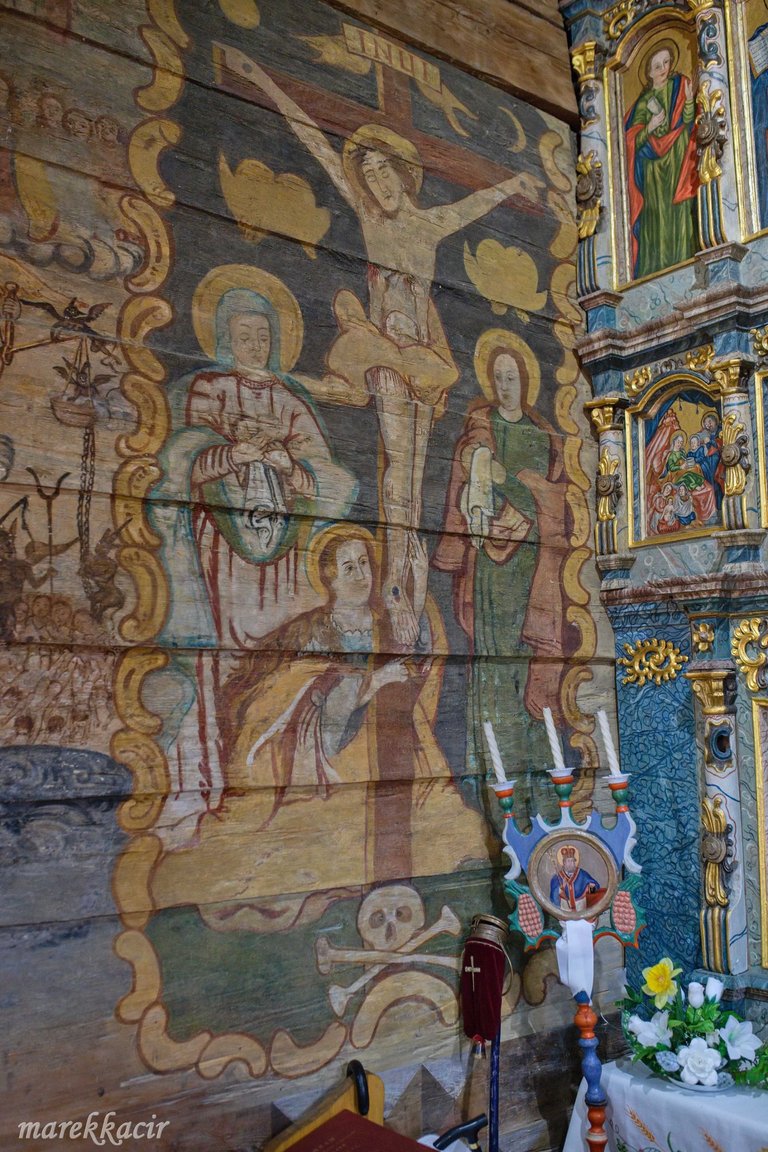
The decoration of the temple is baroque and is influenced by Byzantine art. However, we also find a Latin influence here.
The temple is surrounded by a wooden fence and you can get inside under the wooden bell tower.
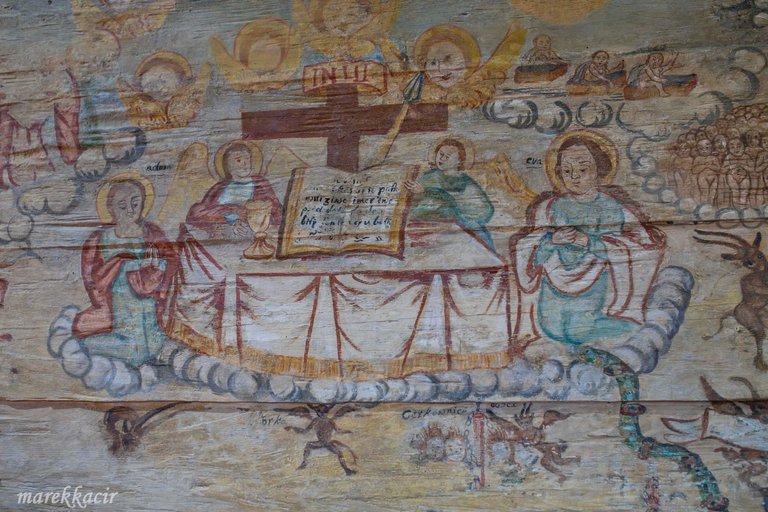
Mrs. Helenka spoke extremely engagingly and although we didn't understand some of the words, we figured them out and it didn't bother us at all. I have to admit that even though we were in the temple, we also laughed together. The temple is beautiful from the outside as well as from the inside. If you are passing by, be sure to stop here. In addition to this beautiful monument, you will be welcomed here by an extremely warm and helpful lady guide.
Thank you
Ahoj.
V rámci nášho výletu po východnom Slovensku sme sa dostali až do blízkosti slovensko-poľských hraníc. Neďaleko nich sa nachádza malebná dedinka s veľmi zaujímavou kultúrnou pamiatkou. Som rád, že vám v dnešnom príspevku môžem napísať o mojom výlete do dreveného kostolíka v dedine Bodružal.

Začnem asi tým najdôležitejším. Tento krásny drevený chrám svätého Mikuláša je od roku 2008 zapísaný na zozname UNESCO. A niet sa čomu diviť. Už pri pohľade z vonku pôsobí veľmi zaujímavo. Pôsobí skromne a jeho drevený charakter výborne zapadol do koloritu širokého okolia.


Vchádzame dnu a pred sebou vidíme nádheru, ktorú vybudovali a vyzdobil naši predkovia. Ako prvé zbadáte ikonostas, ktorý je hneď oproti vchodu.

Pre mňa najzaujímavejšie sú však maľby na stene. Ako sme sa dozvedeli tak slnko môže za to, že sú na niektorých častiach menej výrazné. Pochádzajú z 90 rokov 18. storočia a zobrazujú rôzne výjavy z biblie.

V kostolíku nás privítala veľmi milá pani. Volá sa Helenka a spoločne s manželom a farárom sa starajú o túto historickú pamiatku. Spýtala sa nás či nám má pustiť nahrávku v slovenčine, alebo chceme výklad od nej v rusnackom jazyku. V tejto oblasti Slovenska žije veľa rusnakov, ktorí si zachovávajú svoju kultúru a aj nárečie. Samozrejme že sme chceli, aby nám o kostolíku povedala ona a neľutovali sme.

Chrám pochádza z roku 1658 a je to jedna z najstarších pamiatok byzantského obradu na Slovensku.

Chrám je orientovaný z východu na západ. Má tri veže. Najmenšia je na východe nad oltárom, strednú a najväčšiu na západe. Je celý vybudovaný z dreva, iba základ tvoria kamenné kvádre.

Počas prvej svetovej vojny prišiel chrám o dva zvony. Nahradili ich obyvatelia obce. V súčasnosti pochádza najstarší zvon z roku 1759.

Výzdoba chrámu je baroková a je ovplyvnená byzantským umením. Nájdeme tu však aj latinský vplyv.
Chrám je obklopený dreveným plotom a dnu sa dostanete popod drevenú zvonicu.

Pani Helenka rozprávala mimoriadne pútavo a hoci sme nerozumeli niektorým slovám, domysleli sme si ich a vôbec nám to nevadilo. Musím priznať, že hoci sme boli v chráme, tak sme sa aj spoločne zasmiali. Chrám je krásny z vonku aj z vnútra. Ak budete mať cestu okolo, tak sa tu určite zastavte. Okrem tejto krásnej pamiatky vás tu privíta mimoriadne srdečná a ochotná pani sprievodkyňa.
Ďakujem
Congratulations, your post has been added to Pinmapple! 🎉🥳🍍
Did you know you have your own profile map?
And every post has their own map too!
Want to have your post on the map too?
Wow, very interesting post.
Thanks for sharing 😉
Thank you 🙂
Hiya, @livinguktaiwan here, just swinging by to let you know that this post made it into our Top 3 in Travel Digest #2220.
Your post has been manually curated by the @pinmapple team. If you like what we're doing, please drop by to check out all the rest of today's great posts and consider supporting other authors like yourself and us so we can keep the project going!
Become part of our travel community:
You are right it is beautiful inside and out. Those depictions inside are incredible. The outside is incredible to be all made of wood with the exception of the foundation. Thanks for sharing a very neat church with good works from the people of the past.
Thank you 🙂